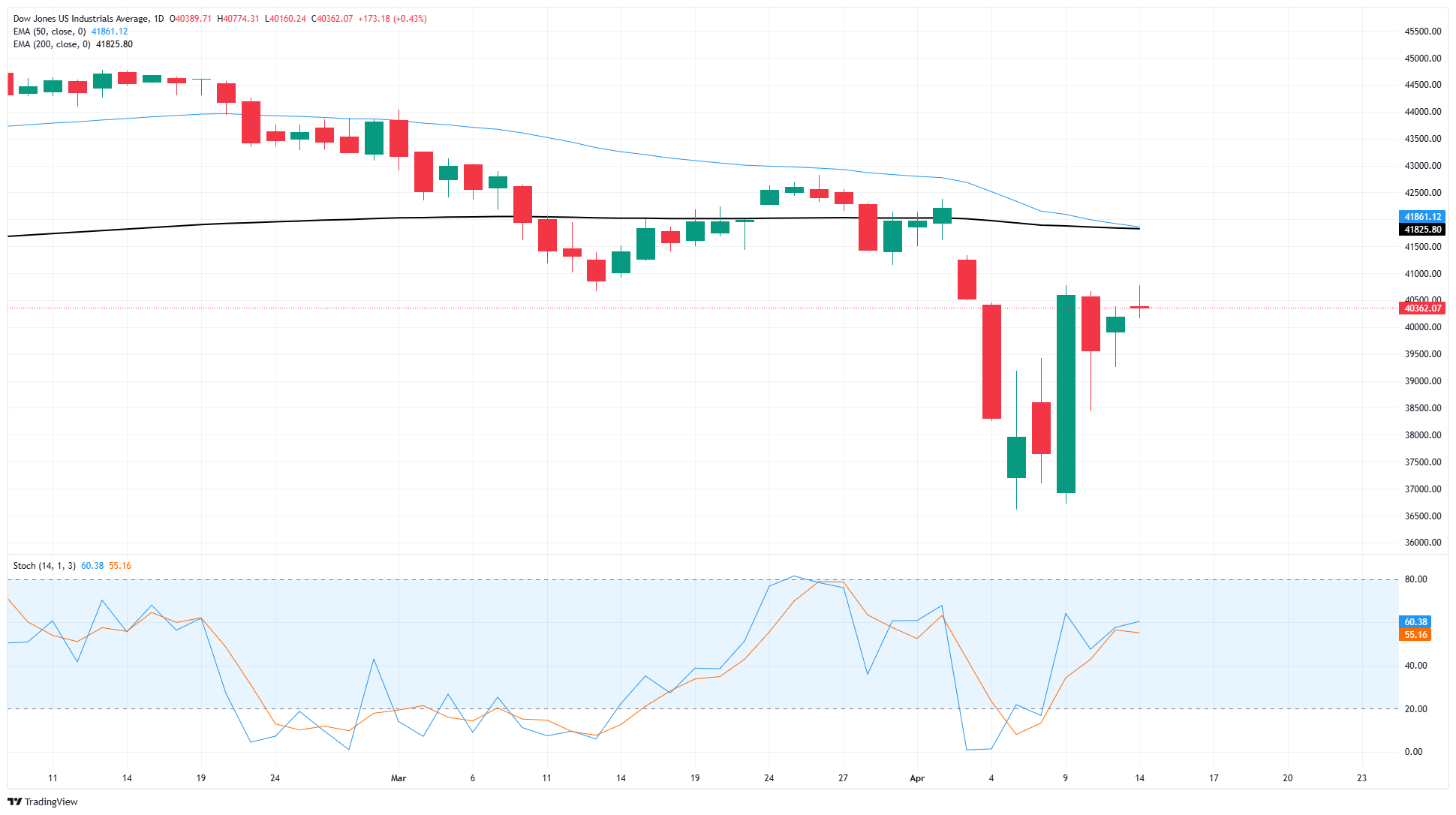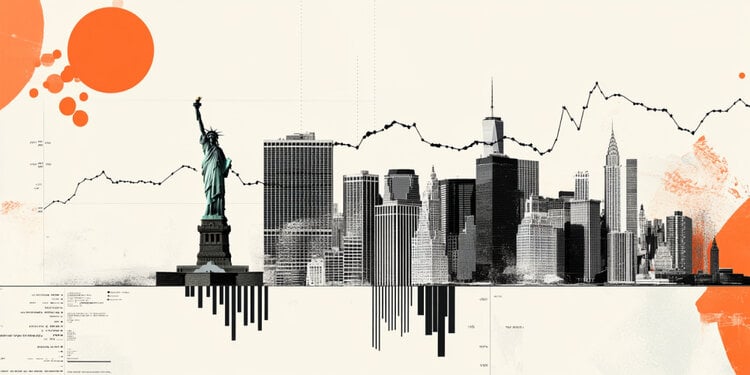- The Dow Jones explored the high end on Monday, but remains stuck near 40,000.
- Equities kicked off the new trading week on a high note, but bullish momentum faded quickly.
- Inconsistent tariff policies from the Trump administration continue to hamper market sentiment.
The Dow Jones Industrial Average (DJIA) kicked off Monday on a strong note, getting dragged higher by a general recovery fueled by a fresh spark in the tech rally. However, bullish sentiment faded quickly as investors face a long, slow crawl toward whatever the Trump administration has planned next for tariffs.
President Donald Trump delivered another about-face on his own tariffs, exempting key electronics and technology from triple-digit tariffs imposed on China. Markets were bolstered by the good news, but investors remain leery of the Trump team’s constant waffling on trade barriers, and are still braced for Donald Trump’s planned additional sectoral tariffs on things like lumber and pharmaceuticals.
This week’s economic data release schedule is notably less impactful than recent weeks, though US Retail Sales figures are on the docket for Wednesday. The trading week will also be shortened by the Easter holiday on Friday.
Read more stock news: Apple stock leads Dow Jones higher after Trump walks back consumer electronic tariffs
Dow Jones price forecast
Despite an early pop, the Dow Jones remains pinned close to the 40,000 major price handle. Bullish momentum on the back of tariff adjustments has fizzled out, leaving the major equity index to battle it out in a tough resistance zone between 41,000 and 40,000.
The DJIA caught a stellar rebound from 16-month lows near 37,000, but price action is now caught in a rough consolidation phase below the 200-day Exponential Moving Average (EMA) near 41,825. A sharp uptick in volatility, but a decrease in directional momentum, has left charts a mess as investors get dragged around by the nose on tariff headlines.
Dow Jones daily chart

Tariffs FAQs
Tariffs are customs duties levied on certain merchandise imports or a category of products. Tariffs are designed to help local producers and manufacturers be more competitive in the market by providing a price advantage over similar goods that can be imported. Tariffs are widely used as tools of protectionism, along with trade barriers and import quotas.
Although tariffs and taxes both generate government revenue to fund public goods and services, they have several distinctions. Tariffs are prepaid at the port of entry, while taxes are paid at the time of purchase. Taxes are imposed on individual taxpayers and businesses, while tariffs are paid by importers.
There are two schools of thought among economists regarding the usage of tariffs. While some argue that tariffs are necessary to protect domestic industries and address trade imbalances, others see them as a harmful tool that could potentially drive prices higher over the long term and lead to a damaging trade war by encouraging tit-for-tat tariffs.
During the run-up to the presidential election in November 2024, Donald Trump made it clear that he intends to use tariffs to support the US economy and American producers. In 2024, Mexico, China and Canada accounted for 42% of total US imports. In this period, Mexico stood out as the top exporter with $466.6 billion, according to the US Census Bureau. Hence, Trump wants to focus on these three nations when imposing tariffs. He also plans to use the revenue generated through tariffs to lower personal income taxes.

